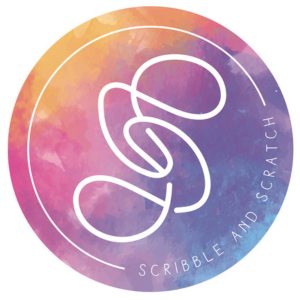Watercolour painting tutorial
Watercolour painting tutorial
Techniques for Creating Stunning Watercolours: A Step-by-Step Guide
Firstly, welcome to our Watercolour painting tutorial at Scribble and Scratch. Secondly, discover the beauty of watercolour painting! Learn basic techniques like washes, blending, and layering. Embrace creativity and let your inner artist shine. Finally, Let's get started!
Introduction to Watercolour Painting
Join us as we do a quick tutorial on how to paint a rockrose with watercolour paints.
Techniques to Master Watercolour Painting
Mastering watercolour painting involves exploring a variety of techniques that can elevate your artistry. Start with the wet-on-wet technique, where you apply wet paint onto a wet surface, allowing colours to blend beautifully for soft, dreamy effects.
In contrast, wet-on-dry provides sharper edges, perfect for detailed work. Experimenting with dry brushing can add texture and depth, while lifting techniques enable you to remove paint for highlights or corrections. Don’t forget the importance of layering, allowing each wash to dry before adding more, which creates richness and complexity in your work. By practicing these techniques, you’ll develop a unique style and confidence in your watercolour journey!
Essential Materials for Watercolour Painting
- Watercolour paper
- Thin pointed paint brush
- Spray bottle filled with water
- Small water jug
- Tissues to wipe down your brush
Tips for Beginners: Getting Started with Watercolours
- Remember, it's water based- use it and enjoy it :) The water allows your paint to be translucent. Practice on the side to get a nice ratio between water and paint
- Choose 4 colours, varying from light to dark
- When you start working, paint your lightest colour first and work to your darkest
- Use paper that is more than 250gsm to avoid your paper buckling
- When you start painting, paint the shapes of light and dark that you see- don't copy the picture.
- Don't give up, keep going until you're happy!
Watercolours are great for kids too, it's easy to clean and loads of fun all around.
What are the benefits of watercolour painting?
1. Ease of Use: Watercolors are relatively easy to pick up, making them an accessible medium for beginners. They require minimal setup and cleanup.
2. Portability: Watercolor paints, brushes, and paper are lightweight and portable, allowing artists to create anywhere, whether indoors or outdoors.
3. Transparency and Layering: Watercolor paints are transparent, allowing artists to layer colors to create depth and complexity in their artwork.
4. Expressiveness: Watercolors lend themselves well to expressive and spontaneous painting styles.
5. Versatility: Watercolor painting techniques can range from delicate washes to bold, vibrant strokes, providing artists with a wide range of creative possibilities.
6. Cost-effectiveness: Compared to some other painting mediums, watercolor supplies are relatively affordable.
7. Therapeutic Benefits: Many artists find watercolor painting to be a relaxing and meditative activity. The process of mixing colors, applying washes, and observing the paint flow on the paper can be therapeutic and help reduce stress and anxiety.
8. Learning Tool: Watercolor painting teaches valuable lessons in color theory, composition, and observation skills. Through practice and experimentation, artists can develop their understanding of light, shadow, and perspective.
9. Time Efficiency: Watercolor paintings can be completed relatively quickly compared to other mediums due to their rapid drying time. This makes watercolors ideal for artists who enjoy working spontaneously or want to create multiple pieces in a shorter amount of time.
Overall, watercolor painting offers a unique set of advantages that appeal to artists of all skill levels and interests. Whether you're a beginner looking to explore a new hobby or an experienced artist seeking new challenges, watercolors provide endless opportunities for creativity and self-expression.
Happy Painting!
Finally, if you want to read more about us, out and about; click here.
If you want to start shopping, click here.
